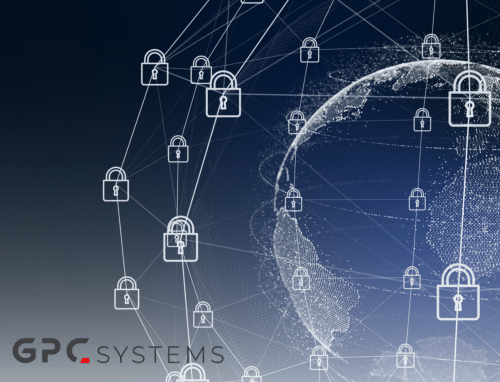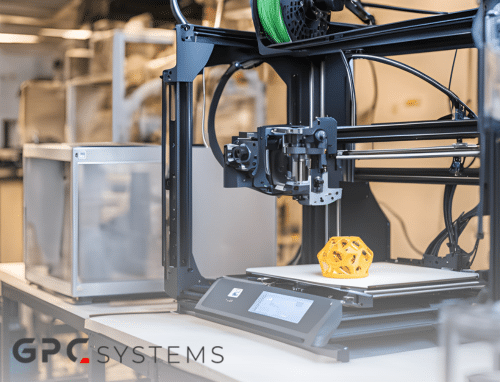
5 Ways AI is Making the Logistics Industry Safer Than Ever
The logistics industry is undergoing a significant transformation with the advent of AI, which is enhancing safety, efficiency, and reliability. Here are five ways AI is making a difference, illustrated with detailed real-life scenarios from leading companies:
1. Enhanced Predictive Analytics for Risk Management
AI-driven predictive analytics are revolutionising risk management in logistics. By analysing vast amounts of data from various sources—weather conditions, traffic patterns, historical shipment data—AI can predict potential disruptions and recommend preventive measures. This proactive approach helps companies avoid accidents and delays, ensuring safer and more reliable operations. For instance, AI tools are now capable of simulating force majeure scenarios to test supply chain resilience and identify weaknesses before they cause real issues.
Real-Life Scenario: Trinetix
Trinetix employs advanced AI tools to simulate force majeure scenarios and test supply chain resilience. For instance, their AI-driven models analyse data from various sources, including weather forecasts, traffic conditions, and historical shipment data, to predict potential disruptions. By identifying these weaknesses before they cause real issues, Trinetix helps logistics companies avoid accidents and ensure safer operations. This proactive approach not only enhances safety but also improves overall efficiency by preventing costly delays.
2. AI-Powered Autonomous Vehicles
The deployment of autonomous trucks is one of the most promising advancements in AI for logistics. Companies like Waymo and Uber Freight are leading the charge with self-driving technology that reduces human error, which is a significant cause of accidents. These autonomous vehicles are equipped with advanced sensors and AI systems that enable them to navigate safely, even in complex environments. This technology not only improves safety but also ensures timely deliveries and reduces operational costs.
Real-Life Scenario: Waymo
Waymo, a leader in autonomous trucking solutions, uses AI to enhance road safety. Their self-driving trucks are equipped with a suite of advanced sensors and AI systems that allow them to detect and respond to obstacles, traffic signals, and other vehicles. For example, Waymo’s AI can process data in real-time to make split-second decisions, ensuring the vehicle navigates safely even in complex driving environments. This reduces the risk of accidents and ensures timely deliveries, making the logistics process safer and more reliable.
Real-Life Scenario: Uber Freight
Uber Freight integrates AI into their autonomous vehicle technology to improve safety and efficiency. Their AI tools provide real-time data and insights, such as live traffic updates and optimal routing information. For example, Uber Freight’s AI can predict and avoid high-risk areas, adjust routes based on current road conditions, and ensure that autonomous trucks maintain safe driving practices. This advanced level of monitoring and adjustment helps in better decision-making and safer operations overall.
3. Smart Fleet Management Systems
AI-enhanced fleet management systems, such as those provided by Geotab and Samsara, utilise machine learning and data analytics to optimise routes, monitor vehicle performance, and predict maintenance needs. These systems help prevent breakdowns and extend the lifespan of vehicles, contributing to overall safety. Real-time monitoring and predictive maintenance ensure that vehicles are always in optimal condition, reducing the risk of accidents caused by mechanical failures.
Real-Life Scenario: Geotab
Geotab’s fleet management platform leverages AI and data analytics to optimise fleet performance. Their system collects and analyses data from each vehicle, including engine diagnostics, driving behaviour, and fuel usage. For instance, Geotab’s AI can predict when a vehicle needs maintenance based on patterns in the data, preventing breakdowns before they occur. Additionally, their route optimisation algorithms ensure that vehicles take the safest and most efficient routes, further enhancing operational safety.
Real-Life Scenario: Samsara
Samsara’s AI-powered fleet management solutions use machine learning to enhance route planning and vehicle maintenance. Their system provides real-time monitoring of vehicle health and performance. For example, Samsara’s AI can detect anomalies in engine performance that might indicate an impending failure, allowing for preventative maintenance. Their route optimisation feature also uses real-time traffic data to adjust routes dynamically, ensuring that drivers avoid congested or hazardous areas. This comprehensive approach helps keep fleets running smoothly and safely.
4. AI in Warehouse Automation
AI-powered robots and automation systems are making warehouses safer and more efficient. These systems handle tasks such as sorting, picking, and packing, which reduces the risk of human error and workplace accidents. For example, CJ Logistics has reported a significant reduction in non-injury-related incidents since implementing AI solutions in their warehouses. By automating repetitive tasks, AI also frees up human workers to focus on more complex and less hazardous activities.
Real-Life Scenario: CJ Logistics
CJ Logistics has significantly improved safety and efficiency in their warehouses by implementing AI solutions. Their warehouses use AI-powered robots to handle repetitive and physically demanding tasks such as sorting packages and retrieving items from shelves. These robots are equipped with sensors and AI algorithms that allow them to navigate the warehouse environment safely, avoiding obstacles and human workers. This automation reduces the risk of workplace accidents and allows human employees to focus on more complex and less hazardous tasks, improving overall safety and productivity.
5. Improved Supply Chain Transparency and Customer Service
AI enhances transparency across the supply chain by providing real-time visibility into shipment status and potential delays. This transparency is crucial for managing customer expectations and ensuring timely deliveries. AI-powered chatbots and customer service tools also streamline communication, providing quick and accurate responses to customer inquiries. This reduces the likelihood of miscommunication and errors that could lead to safety issues. Furthermore, AI tools can analyse customer feedback to continuously improve service quality.
Real-Life Scenario: Trinetix
Trinetix uses AI to enhance supply chain transparency and customer service. Their AI solutions provide real-time visibility into shipment status, allowing companies to track their goods throughout the entire logistics process. For example, Trinetix’s AI can analyse data from GPS trackers and warehouse management systems to provide accurate and timely updates on shipment locations and expected delivery times. This transparency helps companies manage customer expectations and prevent miscommunications that could lead to safety issues. Additionally, AI-powered chatbots handle customer inquiries efficiently, reducing the workload on human staff and ensuring quick and accurate responses.
Real-Life Scenario: Uber Freight
Uber Freight’s AI tools, such as their revamped TMS (Transportation Management System) and Insights AI, provide shippers and carriers with real-time data and actionable insights. For instance, the TMS Control Tower offers visibility into shipping journeys, allowing users to plan and track shipments from creation to final destination. Uber Freight’s AI can predict delays and suggest alternative routes, ensuring timely and safe deliveries. This level of insight and control helps improve decision-making and enhances overall safety in logistics operations.
Real-Life Impact and Future Outlook
The future of AI in logistics looks promising, with continuous advancements expected to further enhance safety measures and operational efficiency. As AI technology evolves, the logistics industry will undoubtedly become safer, more reliable, and more resilient, setting new standards for global commerce.
By leveraging AI, the logistics industry is not only improving its own operations but also contributing to a safer and more efficient global supply chain, ultimately benefiting businesses and consumers alike.
For more detailed information on how AI is transforming the logistics industry, visit our news page weekly.



